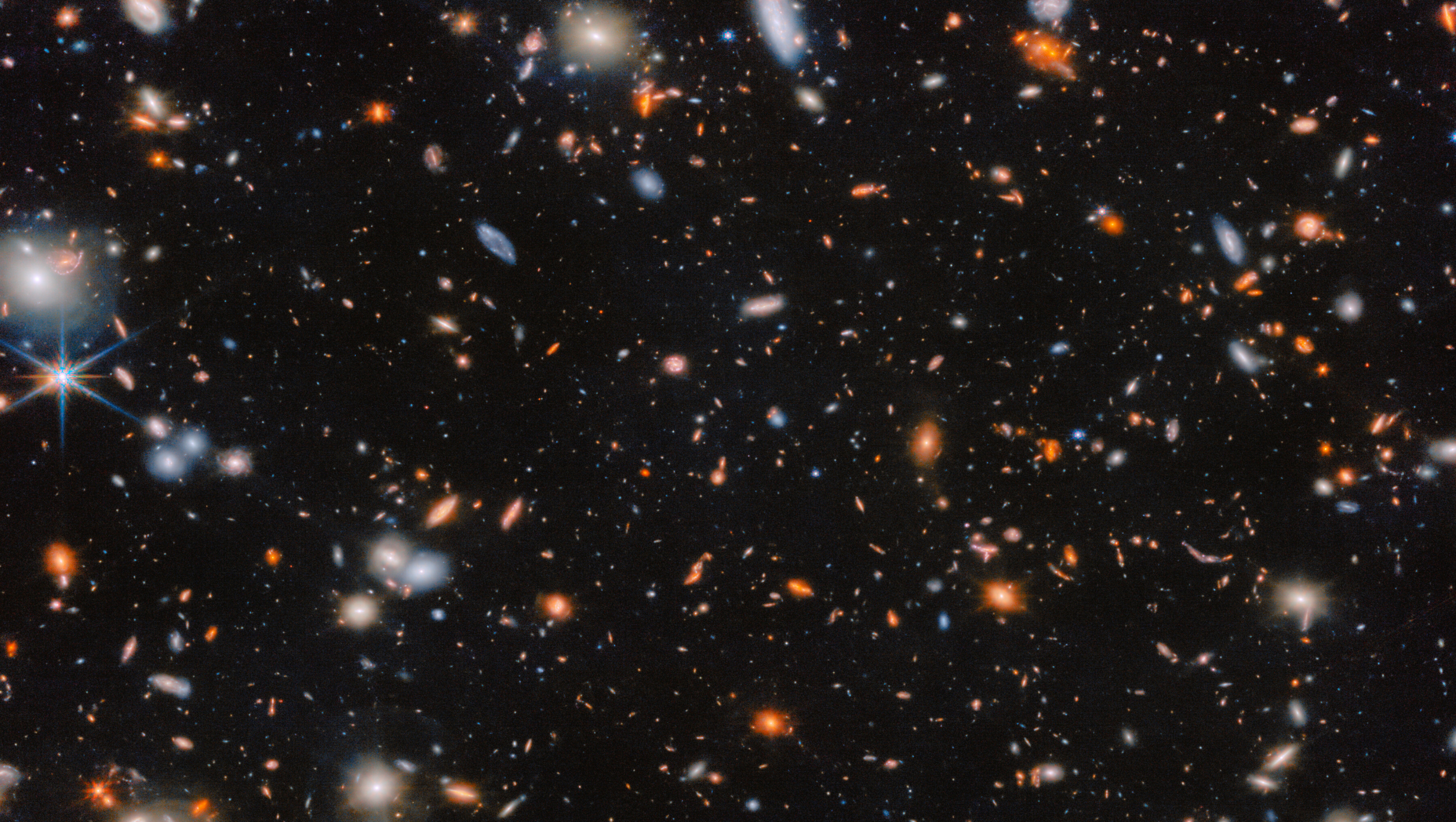Now Reading: James Webb Telescope Reveals Rapidly Growing Supermassive Black Hole in Distant Galaxy
-
01
James Webb Telescope Reveals Rapidly Growing Supermassive Black Hole in Distant Galaxy
James Webb Telescope Reveals Rapidly Growing Supermassive Black Hole in Distant Galaxy


Astronomers using the James Webb Space Telescope, a collaboration among NASA, the European Space Agency, and the Canadian Space Agency, have uncovered a supermassive black hole in the distant galaxy CANUCS-LRD-z8.6. This galaxy is notable for being one of the farthest observed, existing just 570 million years following the Big Bang.
CANUCS-LRD-z8.6 is classified within a special group of galaxies characterized by their extreme distance, small size, and faint brightness. The black hole within this galaxy is currently in a phase of rapid growth, presenting a challenge to existing theories regarding the early formation of galaxies, black holes, and other significant cosmic phenomena.
Given its extreme distance from Earth, CANUCS-LRD-z8.6 appears as what astronomers term a “little red dot” due to its light being significantly redshifted into the infrared spectrum. Since its launch to the Sun-Earth Lagrange Point 2 (L2) in July 2022, Webb’s infrared capabilities have enabled scientists to discover numerous such “little red dots” throughout the cosmos.
The Near-Infrared Spectrograph (NIRSpec) aboard Webb was instrumental in observing the supermassive black hole in CANUCS-LRD-z8.6. Led by Roberta Tripodi from the University of Ljubljana and the Rome Astronomical Observatory, the research team analyzed spectral data from NIRSpec, revealing evidence of an accreting black hole.
“This finding is groundbreaking,” Tripodi commented. “We are observing a galaxy from less than 600 million years after the Big Bang, and it not only hosts a supermassive black hole, but the rate at which this black hole is growing is astonishingly rapid for such an early galaxy. This fundamentally alters our understanding of how black holes and galaxies formed in the early Universe and opens new pathways for further research.”
Analysis of the galaxy’s spectrum indicated the presence of highly ionized gas generated by energetic radiation, with signs that this gas is spiraling at high speeds around the galaxy’s center—a strong indication of a supermassive black hole. Subsequent examination of the NIRSpec data allowed the researchers to estimate the mass of this black hole, determining it to be significantly larger compared to other known supermassive black holes from the same early period.
The findings also indicated that CANUCS-LRD-z8.6 has not formed many heavy elements and retains a relatively compact structure, suggesting it’s still developing. The team further examined other aspects of the NIRSpec data, which helped them understand the star mass within the galaxy and how it correlates with the black hole’s mass.
Co-author Dr. Nicolas Martis of the University of Ljubljana emphasized the significance of the findings, stating, “The spectral characteristics provided by Webb offered compelling evidence of an accreting black hole, something that prior technologies could not detect. Remarkably, this black hole appears overmassive compared to its stellar mass, suggesting that black holes in the early universe may have expanded at unprecedented rates, outpacing their hosting galaxies.”
Typically, the mass of a supermassive black hole correlates with that of its host galaxy, where the two grow in tandem. However, CANUCS-LRD-z8.6 presents a case where the black hole’s mass is greater than expected for its galaxy size.
The researchers propose that these findings might indicate a pattern where black holes formed in the early universe and began to accumulate mass at extraordinary rates, outstripping the growth of their host galaxies, which may explain the surprising mass of the black hole in CANUCS-LRD-z8.6.
“This discovery marks an important advancement in our understanding of the formation of the first supermassive black holes in the Universe,” noted co-author Professor Maruša Bradač from the University of Ljubljana. “The accelerated growth of the black hole challenges our current models for how such large structures could arise so early in cosmic history. We look forward to additional observations that may unveil more galaxies like CANUCS-LRD-z8.6 and further illuminate the origins of black holes and galaxies.”
The Webb telescope is expected to continue uncovering additional little red dots throughout its operational lifetime, contributing to the scientific understanding of the early universe and the evolution of black holes into the luminous quasars we see today. The findings from Tripodi and the team were published in Nature Communications on November 19, with their data derived from the CANUCS collaboration and Webb’s observing program #1208.
Stay Informed With the Latest & Most Important News
Previous Post
Next Post
-
 012024 in Review: Highlights from NASA in Silicon Valley
012024 in Review: Highlights from NASA in Silicon Valley -
 02Panasonic Leica Summilux DG 15mm f/1.7 ASPH review
02Panasonic Leica Summilux DG 15mm f/1.7 ASPH review -
 03How New NASA, India Earth Satellite NISAR Will See Earth
03How New NASA, India Earth Satellite NISAR Will See Earth -
 04And Thus Begins A New Year For Life On Earth
04And Thus Begins A New Year For Life On Earth -
 05Astronomy Activation Ambassadors: A New Era
05Astronomy Activation Ambassadors: A New Era -
06SpaceX launch surge helps set new global launch record in 2024
-
 07Space Force plans new ‘Futures Command’ amid pressure to speed up modernization
07Space Force plans new ‘Futures Command’ amid pressure to speed up modernization




















